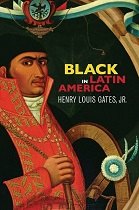
In March 2018 I visited the South American nation of Uruguay, located to the east of my beloved Buenos Aires, Argentina. The visit was my first and as I walked down the streets of Montevideo, I found myself a witness to an impromptu dance celebration in which Afro-Latino culture was on full display. The performance was brilliant, and following that surprise, I visited a museum dedicated to the garments worn during carnival. I also learned about Rubén Rada, a multi-talented Uruguayan performer. I felt a sense of pride at seeing people who would pass as Black Americans displaying their cultural heritage. But I also asked myself, why was I so surprised? It is no secret that Black people can be found all across Latin America. Further, I can trace my own family’s roots on my father’s side back to Central America. And my father has told me more than once that Spanish was spoken by the older generation when he was a kid growing up in Brooklyn, New York. When I saw this book by Professor Henry Louis Gates, Jr., I decided to pick it up and see what was inside. What I found is a valuable tool in understanding world history and the complexities countries struggle with to this day.
The book is presented in a different format than might be expected. We follow the author as he travels around Latin America, meeting scholars and historians who do their best to answer his questions about the concept of race in countries where official labels have been removed. The past is always prologue, and to understand things today, Gates through the help of those being interviewed, takes us back in time when the Spanish Empire perfected the process of colonization. We make stops in Brazil, the Dominican Republic, Haiti, and even Mexico, learning how colonization shaped the culture and policies. Revolutions broke the shackles of Spanish rule but sadly, the matter of color did not go away as we learn through the speakers in the book. And if there is one thing that is constant, it was that in every country, Afro-Latinos continue the struggle for recognition and advancement. But not all is dark in the book. In fact, there are bright moments all throughout the story as the feats and accomplishments of historical figures come back to life, highlighting diversity and resilience across Latin America.
No travel memoir would be complete without food and that applies here. Gates makes sure to let us know about the cultural delights across Latin America as he becomes a guest to individuals whose intellect and actions which make exploration a necessary tool in broadening the mind. The history we learn is incredible and will change the way you view Latin America. But there is an iron that I could not ignore while reading the story. Latin American nations, in an effort to “confront” racism, embraced the elimination of ethnic labels. However, as we see in the book, that decision had an effect they did not anticipate which continues to this day. On the positive side, the acknowledgment of Afro-Latino heritage continues to grow, and as I have seen with my own eyes, Latino is not a monolith. I have shared meals, drinks and sleeping quarters across Latin America with people of all shapes, sizes, and skin colors. And in those moments, they were my brothers and sisters or as they would say “nosotros somos hermanos”. In this story, Gates is the brother of another mother who learns things about Latin America that leave him both shocked and with more questions.
As I read, I found myself enthralled with the people the author meets who are all beautiful people. Their knowledge is surreal and through Gates, we learn history either hidden or omitted. Brazil is a special stop as the country contains the largest Afro-Latino population of any Latin American nation but the countries which caught my attention the most were Haiti and the Dominican Republic. The latter I have visited multiple times but have never traveled to its western neighbor. As I write this blog post, Haiti remains locked in the vice grip of gangs who seized control of the country while acting Prime Minister Ariel Henry was on a trip to Kenya. He has agreed to step down as a “transitional council” is completed to restore order in Haiti. Gangs have warned that any movement without their consent will result in further anarchy in Haiti. I hope that peace prevails, and Haiti can find a path forward. The Dominican Republic has secured its borders and air space and drawn criticism for sending Haitians back across the border to their country. But underneath the surface, these two countries have a long history and Gates dives into it, providing a crash course on the history of Hispaniola.
Gates does a respectable job of asking tough questions, and also gets multiple opinions, sometimes from taxi drivers and bystanders on the streets. The answers vary, and show that within Latin America, things are far from black and white. In fact, there are many shades of grey. And a full discussion on the history of Hispaniola would require a book several times longer than this one. But what Gates provides is enough information, paying close attention to the dates and iconic figures who changed Latin American history. Seasoned travelers, historians, and readers from the countries he visits will know many of the things, if not all, that he writes about. But for readers who have never traveled to Latin America, this book is a primer on cultural aspects that are both insightful and sometimes uncomfortable. But issues can only be resolved if they are confronted.
Currently, change is spreading across Latin America as people have reached their limits with poverty, corruption, ineptitude and political instability. Chile continues its mission to full replace its constitution. Argentina elected a new president who is sending shockwaves across the country. In Peru, the government continues to face mounting dissention. And in Brazil, a former president is facing accusations of falsifying Covid-19 data and having plotted to subvert an election. This is only a sample of the list of places currently in the midst of unrest. Change is coming, but any improvements that occur should include all Latin Americans regardless of what they look like. Progress is slowly being made but there is still work to be done. And despite the long-lasting effects of Spanish colonialization, understanding and acceptance of ancestry will continue to grow as technology advances and history is revealed.
In the summer of 2017 while on a trip to Miami, Florida, a fellow traveler visiting from Puerto Rico struck up a conversation with our group and told me “you and I are brothers, we share the same bloodlines”. Others in the group were surprised because the two of us had quite different appearances. But what I understood is that he was acknowledging the island’s African and Taino legacies, which remain crucial parts of Puerto Rican culture. I thoroughly enjoyed reading this book in which the story never loses its pace. Once Gates hits the ground, he is off to the races, exploring Latin America and all that it has to offer. The title is eye-catching, but I can assure you that the book is not a “rage against the machine” or an attempt to paint Latin America as a dark and unforgiving place. In fact, whether you are Black, White, Hispanic or other demographic, you can find something of value in this book. History is not always pleasant, but it does teach. And here we are the students who must learn history that can help plan the future. Highly recommended.
ASIN : B005C9GNTQ

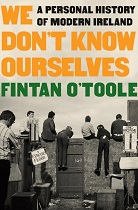 In February 2016, I visited Dublin, Ireland for the first time so that I could see for myself why this small country was so popular. In my hometown of New York City, Irish culture can easily be found. The police and fire departments have long history of Irish men and women who served as first responders in the “city that never sleeps.” And if you are in search of a drink and meal, a good Irish pub is hard to beat. As for my personal experience abroad, I fell in love with Dublin but I regret not having a better understanding of Irish history at that time. In the years that followed, I began to consume books on Ireland and the conflict known as “The Troubles”, being careful to read material from both sides of the matter. Regardless of how much I have read, I can see that there are stories still untold or in some cases, unknown to those on my side of the Atlantic Ocean. Fintan O’Toole is a native son of Ireland and this biography was included in my list of weekly recommendations. The book caught my attention and I knew I had to read it. It suffices to say that I received more than I could have asked for, and this book is a treasure.
In February 2016, I visited Dublin, Ireland for the first time so that I could see for myself why this small country was so popular. In my hometown of New York City, Irish culture can easily be found. The police and fire departments have long history of Irish men and women who served as first responders in the “city that never sleeps.” And if you are in search of a drink and meal, a good Irish pub is hard to beat. As for my personal experience abroad, I fell in love with Dublin but I regret not having a better understanding of Irish history at that time. In the years that followed, I began to consume books on Ireland and the conflict known as “The Troubles”, being careful to read material from both sides of the matter. Regardless of how much I have read, I can see that there are stories still untold or in some cases, unknown to those on my side of the Atlantic Ocean. Fintan O’Toole is a native son of Ireland and this biography was included in my list of weekly recommendations. The book caught my attention and I knew I had to read it. It suffices to say that I received more than I could have asked for, and this book is a treasure.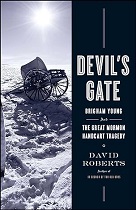 In the fall of 1856, the Willie and Martin Mormon handcart expeditions found themselves caught in devastating blizzards in the mountains of Utah and Wyoming. Of the nine hundred travelers, two hundred fifty of them did not reach their destination. The migration was a disaster and a stain on the legacy of
In the fall of 1856, the Willie and Martin Mormon handcart expeditions found themselves caught in devastating blizzards in the mountains of Utah and Wyoming. Of the nine hundred travelers, two hundred fifty of them did not reach their destination. The migration was a disaster and a stain on the legacy of  Discussions of American history during the 1800s may cause one to wonder how the country survived intact. The Civil War, conflicts with Native Americans, and two presidential assassinations highlighted the violent century in which America changed significantly. As the 1900s approached, America was ready for new challenges but in 1914, the world was plunged into war after the assassination of
Discussions of American history during the 1800s may cause one to wonder how the country survived intact. The Civil War, conflicts with Native Americans, and two presidential assassinations highlighted the violent century in which America changed significantly. As the 1900s approached, America was ready for new challenges but in 1914, the world was plunged into war after the assassination of 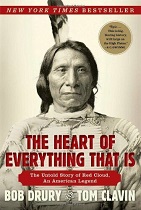 In the 1800s, the United States was a rapidly growing nation that had evolved from thirteen British colonies to a country seeking to expand across North America. The ideology of “manifest destiny” propelled the drive west into the unchartered and unknown. White settlers who dared to venture past America’s borders faced severe dangers with no guarantee of military aid. But all knew that the gravest dangers outside of the United States were the Native American tribes who called the continent home. As explorers and American military personnel moved further west, the native tribes reaffirmed their commitment to preserving their way of life. Washington’s plan for establishing more territory set the two opposing cultures on a collision course that spread violence, mistrust, and cast a dark cloud over American history that exist to this day. The names of
In the 1800s, the United States was a rapidly growing nation that had evolved from thirteen British colonies to a country seeking to expand across North America. The ideology of “manifest destiny” propelled the drive west into the unchartered and unknown. White settlers who dared to venture past America’s borders faced severe dangers with no guarantee of military aid. But all knew that the gravest dangers outside of the United States were the Native American tribes who called the continent home. As explorers and American military personnel moved further west, the native tribes reaffirmed their commitment to preserving their way of life. Washington’s plan for establishing more territory set the two opposing cultures on a collision course that spread violence, mistrust, and cast a dark cloud over American history that exist to this day. The names of 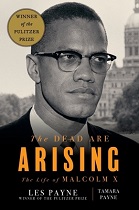 February 21, 2024, will mark fifty-nine years since the assassination of
February 21, 2024, will mark fifty-nine years since the assassination of 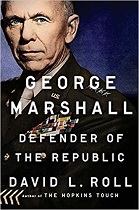 If you were to ask me to find one word to describe the late
If you were to ask me to find one word to describe the late 
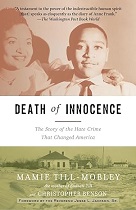 On August 28, 1955,
On August 28, 1955, 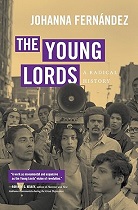
You must be logged in to post a comment.